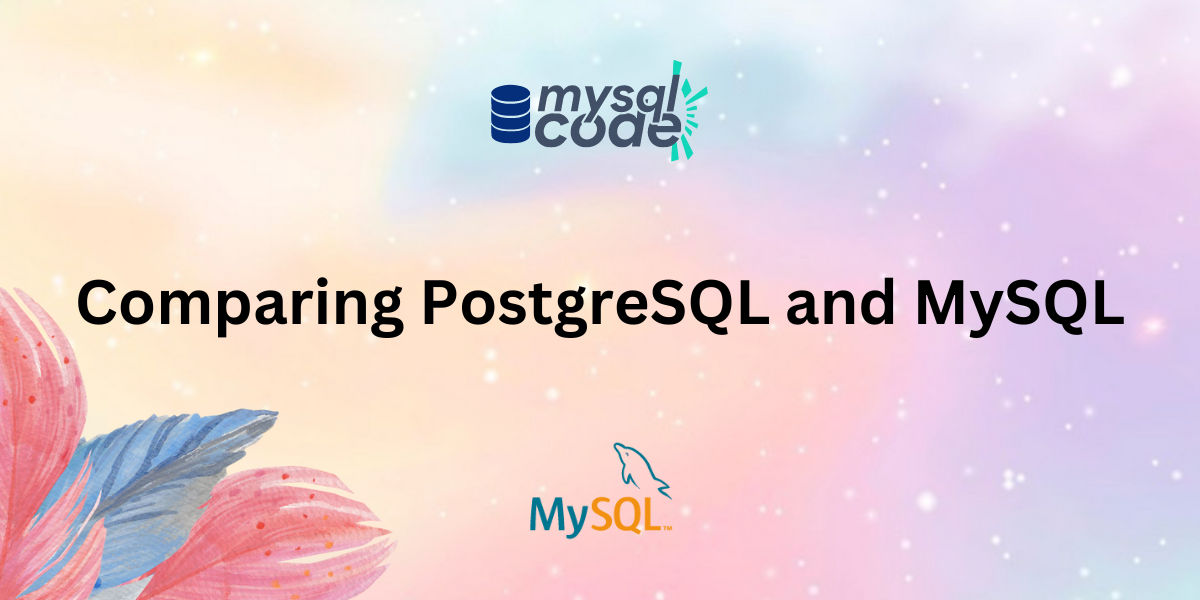In a world where data is king, we need to choose applications and software for manipulating and maintaining our data. One such way is to use RDBMS or relational database management systems. In simple words, RDBMS is the collection of tables called a database. The database stores data in tabular format with additional information and data manipulation tools.
In this tutorial, we’ll look into the two most popular RDBMS, namely, MySQL and PostgreSQL. We’ll see how they are different from each other and their applications.
What is PostgreSQL?
PostgreSQL or Postgres is an extensible open-source relational database management system. It complies with the Structured Query Language. It supports both SQL(relational) as well as JSON(non-relational) queries.
PostgreSQL was released in 1996 and developed by the Berkeley Computer Science Department, University of California. It was originally called POSTGRES, referring to the older database called Ingres developed by Berkeley. The idea behind developing Postgres was to provide minimal features for multiple datatypes.
Originally, it was created for Linux operating system, but later it was evolved for other operating systems as well, such as Windows, macOS, etc. It supports programming languages such as python, javascript, c++, c#, java, etc.
What is MySQL?
MySQL is an open-source relational database management system and was originally developed by Sun Microsystems in 1995. It is one of the most popular RDBMS. It was later acquired by Oracle in 2010, as a result of Sun Microsystems’ acquisition by Oracle.
MySQL is easy to use and a fast RDBMS used by a variety of businesses, small and big. It is compatible will many operating systems such as Windows, Linux, macOS, Solaris, etc. It supports programming languages such as python, java, javascript, Perl, PHP, etc.
Also read: PostgreSQL vs SQLite
Difference between PostgreSQL and MySQL?
| MySQL | PostgreSQL | |
| Architecture | It is a relational database management system. | It is an object-based database management system. |
| Speed | It is faster than PostgreSQL. | It is densely featured as compared to MySQL, therefore, it is slower. |
| Storage Engine | It has a multi-layer storage structure. For Example, InnoDB, MyISAM. | It has a single storage engine as it is a unified database server. |
| Index support | It majorly supports B-tree; It may also support R-tree, inverted indexes, and hash for certain types of data type. | It supports B-tree, hash, GIN, BRIN, GiST, and SP-GiST. |
| ACID property compliance | Some of its versions are ACID-compliant. | It is fully compliant with ACID property. |
| Licensing | GNU(General Public License) licensed. | MIT-style licensed. |
| Written in | It is written in C/C++. | It is written in C. |
| Security | It has TLS support. | It has Native SSL support. |
| Usage | It is generally used for simple operations. | It is used for large and complex operations. |
| Inheritance | It does not support table inheritance. | It supports table inheritance. |
| Connection to server | Whenever a connection is created, it is an OS thread. | Whenever a connection is created, it is considered an OS process. |
| Prominent users | GitHub, NASA, Twitter, Youtube, Spotify, Netflix, Tesla, Facebook. | Cisco, Skype, IMDB, Red Hat, Apple, Macworld, Etsy. |
MySQL or PostgreSQL, which one should you choose?
MySQL and PostgreSQL have both advantages as well as disadvantages. You can choose the right DBMS for your data based on the following questions which you can ask yourself:
- What type of data do you want to store?
- What type of operations you will be performing on your data?
- How much data you’ll be processing in a day?
- Do you need the data to be analyzed, and what kind of analysis you will be performing on your data?
These are a few questions you can go by, after understanding your needs you may choose to work with PostgreSQL or MySQL.
Conclusion
In this tutorial, we learned about MySQL and PostgreSQL. We saw differences between the two based on their features and characteristics. You also learned, how to choose between the two and what questions we may ask before taking the decision.
